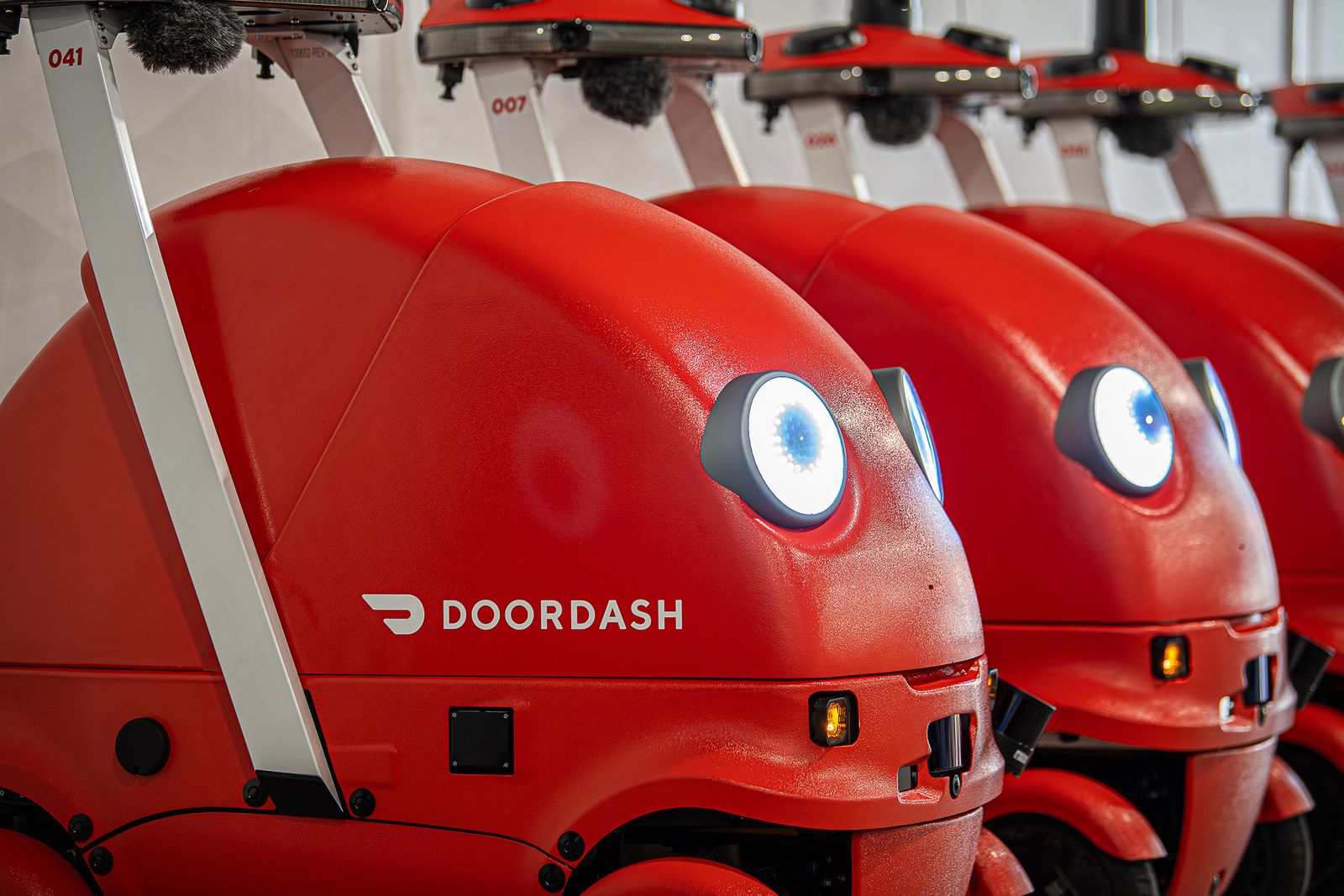Consider the technical challenge Dot has ahead of it: DoorDash says the robot is built to operate on sidewalks, bike lanes, and roads. It’s meant to pilot in and out of parking lots to pick up food and to navigate driveways and apartment complexes to drop it off. That means the software needs to “understand,” predict the movement of, and get around a remarkable number of situations, vehicles, and living things: cars, trucks, school buses, strollers, children’s bicycles, aggressive mopeds, motorized wheelchairs, dogs, squirrels, toddlers, people with limps, runners, competitive cyclists. And on and on.
Delivery robots face “all the challenges of the real world,” says Nikolas Martelaro, an assistant professor at the Human-Computer Interaction Institute at Carnegie Mellon University. In 2021, he and colleague Sarah Fox followed around a small test fleet of delivery robots in Pittsburgh, Pennsylvania. “They had trouble navigating sidewalks, they got stuck, they had interactions with people that were not always ideal,” he says. Just this month, he noted, a video of a motorized wheelchair user trying and failing to get around a sidewalk delivery robot in Los Angeles went viral, echoing a similar incident that happened when the bots were testing in Pittsburgh. “They’re still sort of unsolved problems,” Martelaro says.
Beep Beep
Still, DoorDash executives say the company has built something that’s robust enough to last on the streets and cute enough to look like a good neighbor. (In their research, Martelaro and Fox did observe a good Samaritan helping a stuck robot out of a planter. It’s possible to build something that everyone doesn’t want to kick.) Big googly eyes on the front act as headlights and expressive lenses. Push a button and the hull peels back like a big gaping mouth to reveal the delivery sitting inside. There are cup holders for drinks and temperature-controlled sections for different types of food. On the outside, DoorDash’s designers even gave Dot a little speck of a nose, for maximum anthropomorphization.
Dot is big for a delivery vehicle; standing next to it, it feels like a slightly smaller Smart car. Tang says the size and heft should discourage people from messing with it. “It’s harder to pick up than a sidewalk robot,” he says.
Services Marketplace – Listings, Bookings & Reviews

